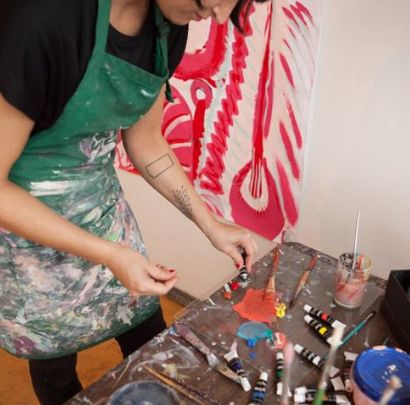Remember when you were in elementary school and painting seemed so simple when your teacher just handed you art supplies and helped wash brushes afterwards? Approaching the medium like a old artist, you should discover paintbrush materials and the ways to properly look after your brushes.

First, you must decide whether you will be needing soft or stiff hairs on your paintbrush. Either can be produced of natural hairs or synthetic fibers. A thin paintbrush is good when you want to do detailed work or precise painting. It enables one to spread paint easily. Hard bristles alternatively are better for manipulating thick paint. This allows you to create brush marks inside the paint that may be seen for the canvas. Vincent van Gogh’s effort is renowned for this technique, as evidenced by his painting The Starry Night.
Most purists will say that natural hair can be superior to synthetic fiber for the flexibility and strength. The hair for paintbrushes comes from animals including Sable, squirrel, hog, camel, ox, pony and goat. When the regarded using hair in one of those animals enables you to squeamish or perhaps you have ideological difficulty with this, don’t fear: modern paint set came a considerable ways and therefore are even less expensive than their natural hair counterparts.
The next thing is to master a little bit about paintbrush anatomy. The handle is normally manufactured from wood and is referred to as the ferrule. This supports the hairs or bristles. The top with the bristles is referred to as the toe.
When deciding which paintbrush to use it is important to know how big is the brush. This is often driven by taking a look at a number on the side of the handle. The littlest dimension is 00 as well as 0, 1, 2 and so on. In case you are buying online it is very important go to a picture in the brush you’re purchasing. Two brushes sized the same can be very different due to the quantity of bristles along with the width from the handle. This concern may be alleviated should you shop in the actual store or happen to be familiar with the brand of brush.
It will require considerable time and money to have the right paintbrush, in order that it is sensible to take care of them, such as proper cleaning after each use.
Before beginning, make sure you have mild soap (or turpentine if appropriate) and some tissue. You will probably need lukewarm water along with a spot to dry your brushes.
Wipe from the excess paint by using a soft cloth or tissue. Then, rinse your brushes in turpentine if you work with oils, but use lukewarm water should you be paint is water-based. Warm water could cause the hairs of one’s brush to drop totally out. Afterwards, gently wash your brushes with soap. Repeat all over again as many times as necessary until no color happens as well as your brush returns towards the original color. Next rinse your paintbrush in water that is clean. Be sure you remove the excess water next. In the event the brushes seem misshapen, make use of your fingers to softly bring the toothbrush return to the original shape.
Congratulations, you are ready to dry the paintbrushes. Wrap the bristles in tissue or toilet tissue when they’re wet. Once the bristles dry they’ll contract in this way and may maintain their shape. Allow brushes dry at room temperature. Don’t rest them on their own head since this is another potential hazard to maintaining appropriate shape.
Check out about paint colors take a look at this webpage: look at more info
